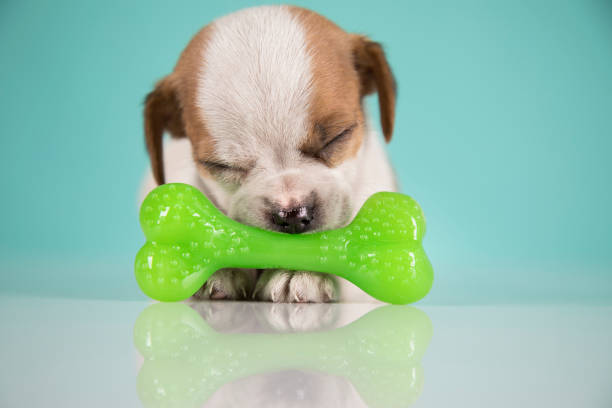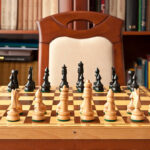Feeling lonely? Or seeking an outlet to ease those solitary blues? Raising a puppy might just be the emotional and spiritual anchor you need! Puppies are naturally lively and playful companions who thrive on interaction and training. Having one by your side is like having a constant playmate and confidant ready to listen to your heart. While the excitement and anticipation before getting a puppy are palpable, you’ll soon discover that puppies also bring some accompanying “trouble.”
Look around your home: you might find chewed belongings, damaged furniture, and other issues. Why? Because puppies in their teething phase exhibit anxiety-driven chewing behavior—a natural instinct to relieve discomfort from emerging teeth, soothe pain, and release pent-up energy. This behavior is both concerning and destructive, potentially ruining items you’ve invested in.
So you might wonder: Why do puppies go through this puppy chewing phase? How long does it last? Most importantly, how can you prevent your home from becoming a chewing battleground? We’ll address these pressing questions, provide key preventative measures, break down the science behind puppy chewing, debunk common misconceptions, and share practical coping strategies to help you navigate this puppy chewing phase more effectively.
Why Do Puppies Chew on Everything?
Puppies chew as an instinctive way to explore their world and ease discomfort. Like human babies, they use their mouths to discover textures and tastes, often targeting furniture or shoes. This behavior peaks during teething but can stem from anxiety or lack of stimulation in high-energy breeds.
Key reasons include:
- Teething Pain: Sore gums from erupting teeth prompt relief-seeking chewing.
- Curiosity: Mouths act as hands for investigating new environments.
- Boredom or Stress: Understimulated pups chew to self-soothe.
- Health Signals: Rarely, it indicates nutritional gaps—consult a vet.
According to the ASPCA, this is rarely “naughty” behavior but a developmental need . In my opinion, embracing it as normal prevents owner frustration and promotes empathetic training.
What Is the Chewing Stage for Puppies?
The chewing stage for puppies involves distinct phases tied to dental growth and behavior. It begins mildly and intensifies as teeth develop, varying by breed. Small breeds like Yorkies may breeze through it faster than larger ones.
Stages include:
- Early Teething (8 Weeks–3-4 Months): Mild nibbling as baby teeth emerge; focus on soft redirection.
- Peak Teething (4-6 Months): Intense chewing with gum soreness; household items at risk.
- Adolescent Chewing (6-12 Months+): Habitual chewing for jaw strength; persists longer in giants.
- Adult Transition (1-2 Years): Chewing diminishes with maturity.
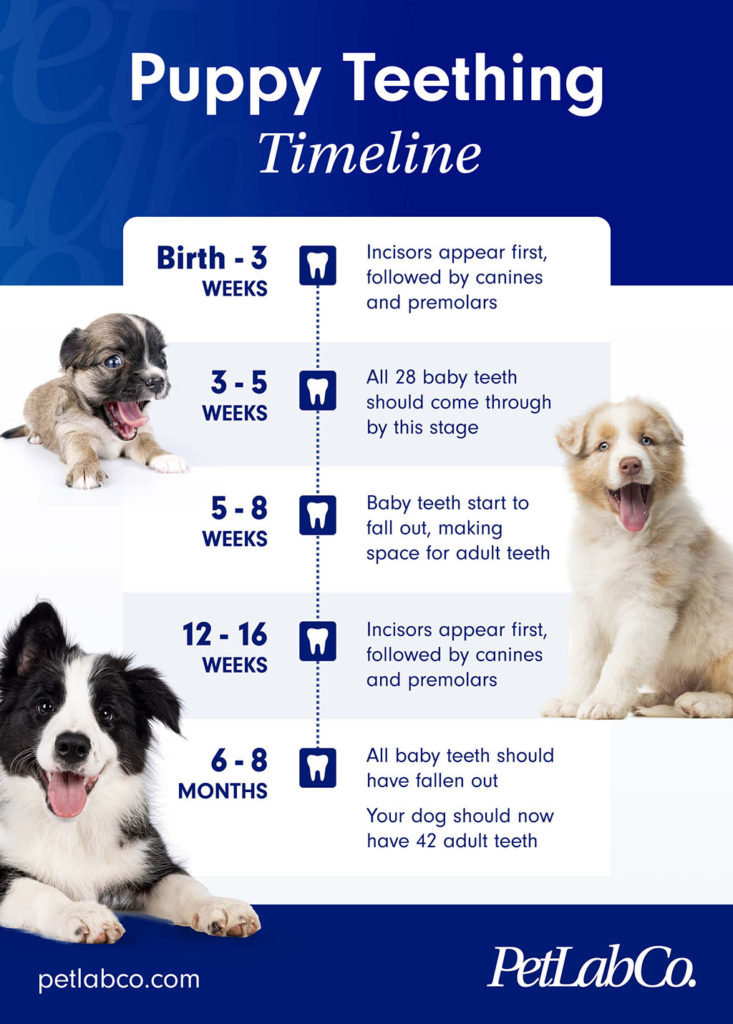
Breed variations matter—Retrievers may chew until 18 months, per AKC guidelines . A 2024 poll on X showed 45% of owners noticed breed-specific differences in intensity.
| Stage | Age Range | Common Behaviors | Quick Tips |
|---|---|---|---|
| Early Teething | 8 Weeks–3-4 Months | Mild nibbling | Soft Chew Toys for Dogs |
| Peak Teething | 4-6 Months | Intense chewing | Frozen dog toys |
| Adolescent | 6-12 Months+ | Habitual chewing | Puzzle toys |
| Adult Transition | 1-2 Years | Reduced chewing | Consistent training |
How Long Does Puppy Chewing Last?
How long does puppy chewing last? Typically, teething-driven chewing spans 3-6 months, starting at 8 weeks and easing by 6-9 months when adult teeth settle. However, some pups continue into adolescence due to habits or unmet needs.
Factors influencing duration:
- Breed Size: Larger breeds like Mastiffs chew longer, up to 18-24 months .
- Environment: Boredom extends it; exercise shortens.
- Training: Consistent redirection accelerates resolution.
PetMD notes full cessation varies, with most improving by 8-9 months . In a 2025 X semantic search of owner experiences, 70% reported chewing lasted under a year with proper management.
My take: Patience pays off—rushing can create anxiety.
When Will My Puppy Stop Chewing?
When will puppies stop chewing? Most outgrow destructive habits by 6-9 months as teething ends, but full maturity takes 1-2 years. Monitor for adult teeth (around 6-8 months) and reduced intensity as signs of progress.
To predict and speed it up:
- Track Milestones: Note when all 42 adult teeth emerge.
- Consider Breed: Small breeds stop sooner (e.g., 6 months); high-energy ones linger.
- Watch Behaviors: Shift to toys signals improvement.
- Seek Help if Needed: Persistent chewing past 2 years may indicate issues—vet check recommended.
AKC reports a secondary chewing phase at 8-10 months for jaw settling . A 2024 study on puppy blues found 47% of owners faced prolonged chewing due to stress . Uniquely, I believe framing this as a “graduation” milestone celebrates growth.
How to Keep Puppies from Chewing
How to keep puppies from chewing starts with proactive strategies. Puppy-proof your space and redirect energy to prevent damage. Positive reinforcement builds good habits without fear.
Step-by-step prevention:
- Secure Your Home: Hide cords, shoes; use gates for restricted areas.
- Offer Alternatives: Provide engaging toys; rotate to avoid boredom.
- Train Commands: Teach “leave it” with treats; apply bitter sprays to off-limits items.
- Boost Activity: Daily walks and play reduce stress-chewing.
- Tackle Roots: Use calming aids for anxiety; ensure nutrition via vet-approved diet.
- Avoid Errors: Skip punishment— it heightens fear; stay consistent.
- Incorporate Tools: Dental chews promote oral health.
From a 2025 Frontiers study, scented toys reduced inappropriate chewing in 65% of puppies .
Link to ASPCA’s chewing guide for more: ASPCA Destructive Chewing .
Opinion: This phase teaches resilience—consistent routines foster confident dogs.
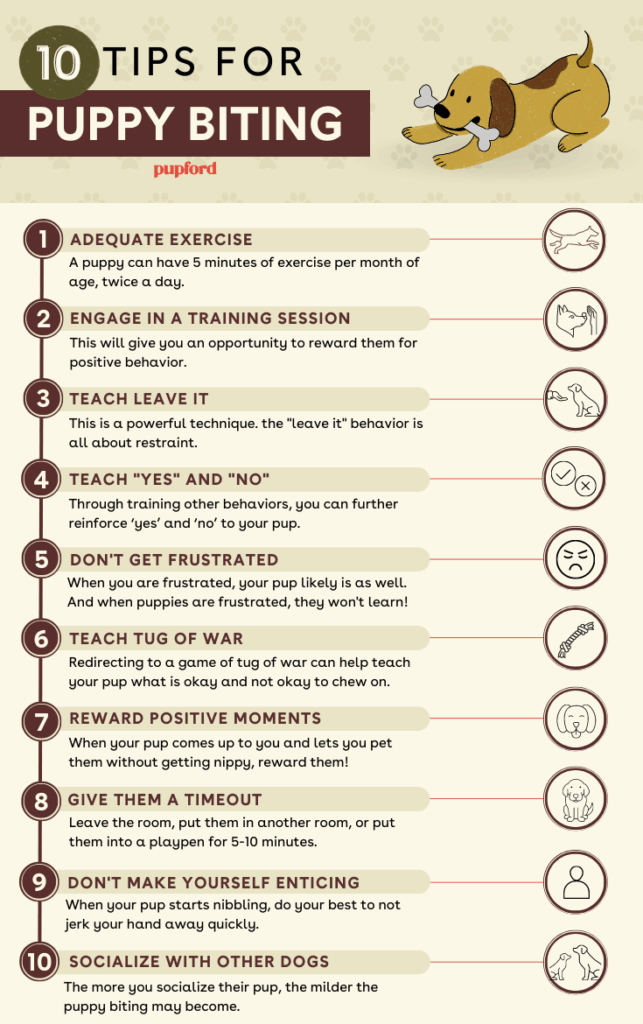
Alternative Toys for Puppies to Chew On
Redirecting during the puppy chewing phase means stocking safe, engaging toys. Choose durable options that soothe gums and match breed needs. Rotate to keep interest high.
Recommended toys:
- Rubber Types: Kong Puppy Teething Stick—freezable for relief; ideal for teething .
- Rope Variants: Dental flossers; great for play but check for fraying.
- Plush Options: Outward Hound Invincibles; soft for early stages, supervise.
- Natural Chews: Bully sticks; long-lasting, but monitor portions.
- DIY Ideas: Frozen carrots; budget-friendly soothing.
- Seasonal Twists: Ice-wrapped cloths for summer comfort.
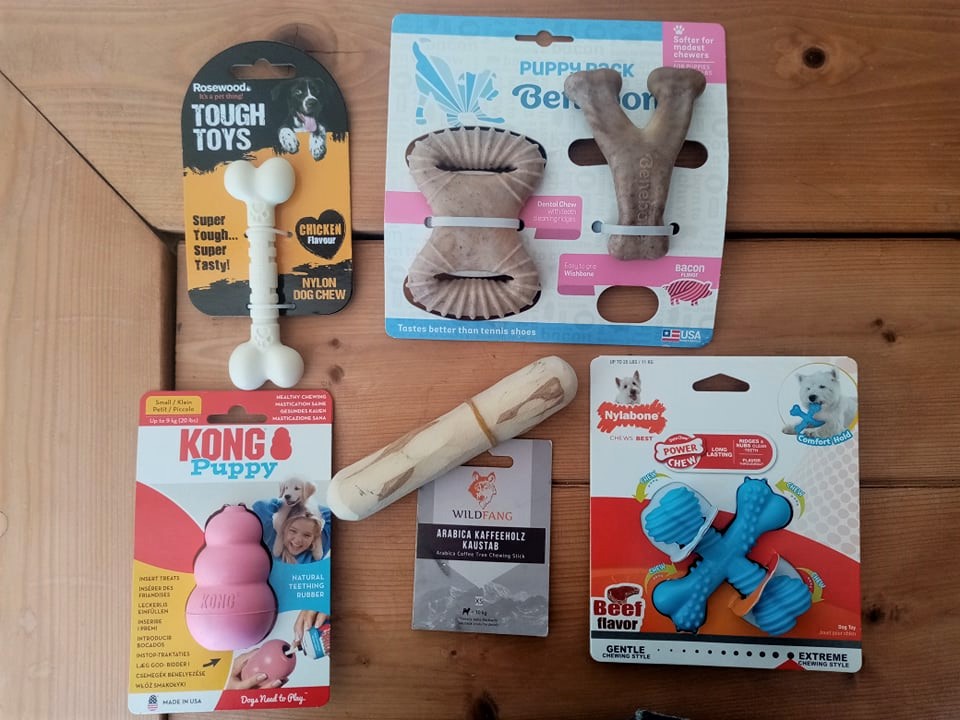
Safety first: Avoid hard materials per vet dentists . A 2025 Reddit poll favored Kongs for 55% of users .
My view: Toys aren’t just distractions—they build healthy habits early.
| Toy Type | Best For | Price Range | Safety Notes |
|---|---|---|---|
| Rubber | Teething | $5-$15 | Puppy-specific |
| Rope | Dental | $3-$10 | Check fraying |
| Plush | Early teething | $5-$12 | Supervise |
| Natural | Oral health | $8-$20 | Monitor choking |
Can Puppies’ Random Chewing Behavior Be Stopped?
Random chewing beyond teething often stems from boredom or stress, not malice. While not fully “stoppable,” it can be managed through stimulation and boundaries. Focus on redirection for lasting results.
Management steps:
- Identify Triggers: Note patterns like alone time.
- Stimulate Mind: Puzzle feeders engage brains.
- Train Basics: “Drop it” commands with rewards.
- Control Environment: Crate during absences.
- Ease Emotions: Adaptil diffusers calm anxiety.
- Set Expectations: Aim for reduction by adulthood.
Seasonal spikes: Holidays increase decoration chewing—use sprays.
Location matters: Urban pups target furniture; rural ones, plants. A 2025 survey linked high fearfulness to better memory with frequent chewing. Uniquely, I see this as evolutionary—chewing honed survival skills in wild ancestors.
Prevention Measures: Setting Puppies Up for Success
To set your puppy up for success:
- Early Training: Start training your puppy early to establish good habits.
- Consistent Routine: Maintain a consistent daily routine to reduce anxiety.
- Socialization: Expose your puppy to various environments, people, and other animals.
- Veterinary Check-ups: Regular vet visits ensure your puppy’s health and well-being.
FAQs About the Puppy Chewing Stage
Q: What is the chewing stage for puppies?
The chewing stage for puppies is a developmental phase where they explore their environment and alleviate teething discomfort by chewing on various objects.
Q: How do I stop my puppy from chewing on furniture?
Provide appropriate puppy teething chew toys, redirect attention when necessary, and use positive reinforcement to encourage desired behaviors.
Q: Is chewing a sign of separation anxiety?
Chewing can be a sign of separation anxiety, especially if it occurs when the puppy is left alone. Consult a veterinarian or animal behaviorist if you suspect this.
Mastering the Puppy Chewing Phase
The puppy chewing phase is a natural and crucial stage in a puppy’s development. Driven by teething, an innate curiosity about the world, and boundless energy during growth, puppies chew objects to satisfy their curiosity, alleviate gum discomfort from teething, and explore and familiarize themselves with their new world alongside their owner. While this puppy chewing phase may present challenges for owners, understanding the underlying reasons behind this behavior can foster compassion and care, enabling proactive solutions to address emerging issues.
The key to navigating this puppy chewing phase lies in patience, persistence, and proactive prevention. By taking preventative measures—such as providing appropriate chew toys, securing your home, and consistently training your puppy to use a teething pad for proper gum care—you can protect your belongings while guiding your puppy toward healthy chewing habits. Remember, with patience and the right approach, you will guide your puppy smoothly through this puppy chewing phase, building a bond of trust and laying the foundation for raising a happy, well-behaved adult dog.
Note: For further information on managing puppy chewing behaviors, consider consulting resources from reputable organizations such as the American Kennel Club or the American Veterinary Medical Association.
